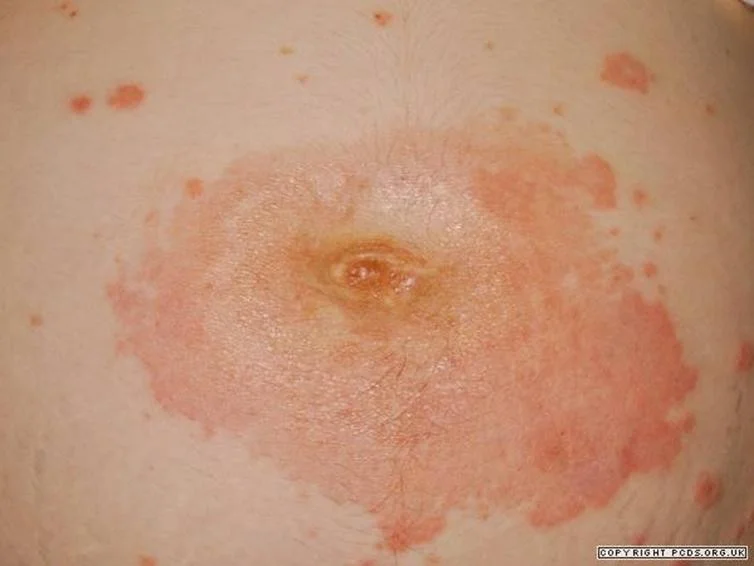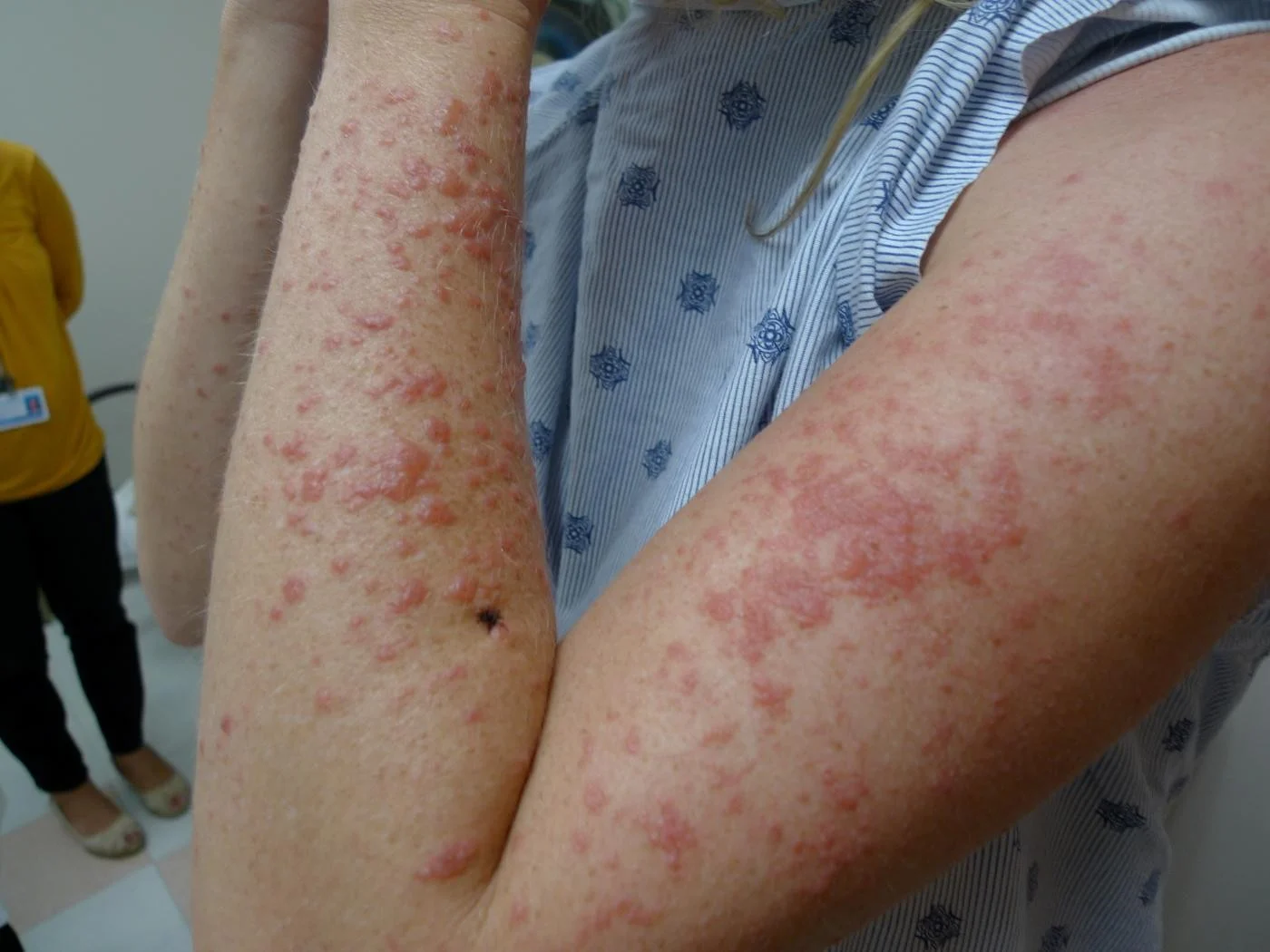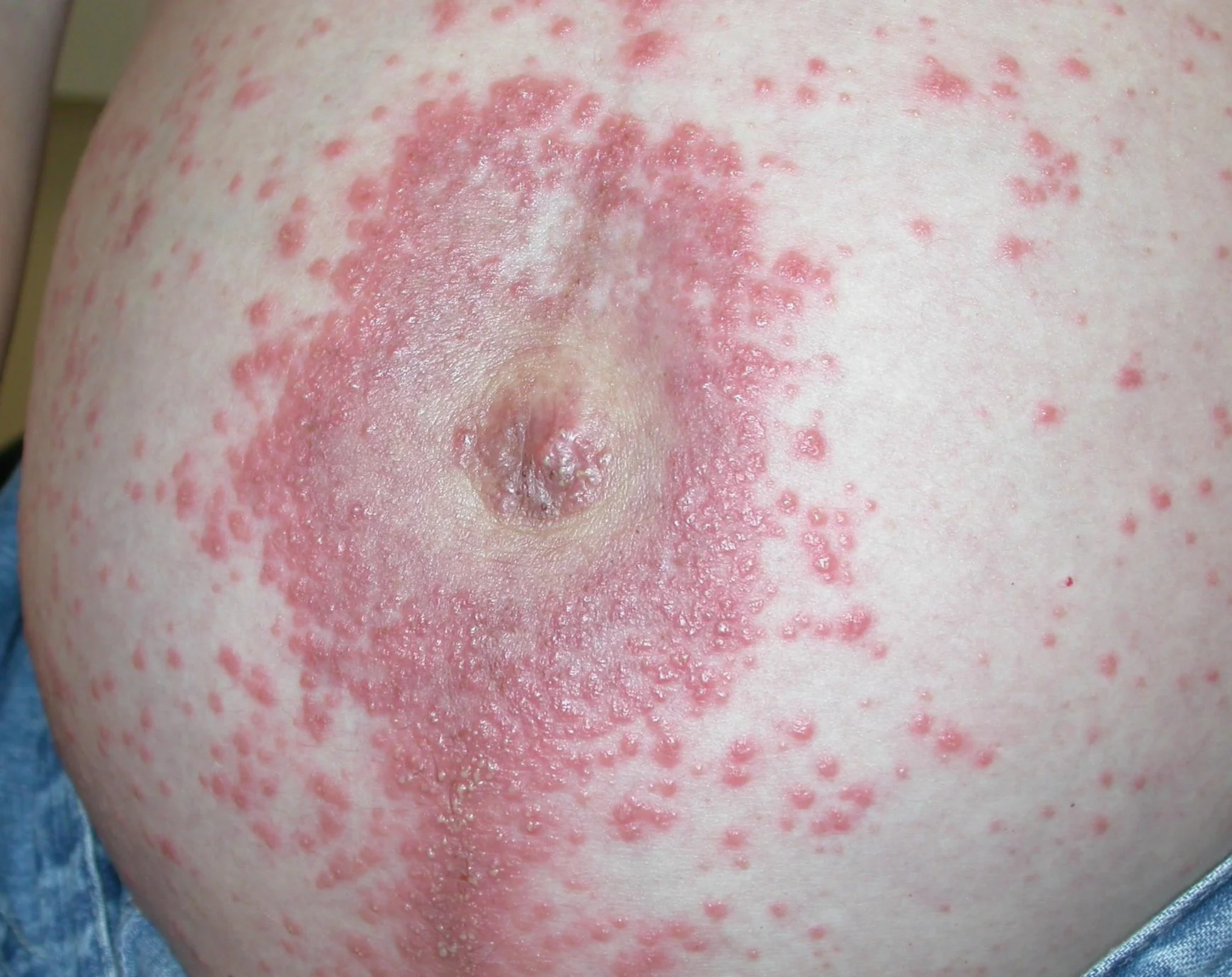Diagnosis: Pemphigoid gestationis
- Autoimmune blistering disease
- Incidence: 1 in 10,000-50,000 pregnancies
- Starts in 2nd or 3rd trimester (mean onset = 21 weeks)
- Presents as pruritic papules and vesicles/bullae
- Involves the umbilicus in fifty percent of cases
Histopathology often helps with the diagnosis. Findings include a subepidermal blister with eosinophils. Z
Immunofluorescence provides a definitive diagnosis with findings of a linear band of C3 +/- IgG at the basement membrane zone. Z
Treatment
1- Topical steroids can be helpful in mild disease.
2- With widespread disease, patients will often benefit from oral steroids, which are safe to use in pregnancy (category B drug).
Complications
- Preterm delivery
- Small-for-gestational age infants
- Blisters (10% risk) in the neonate secondary to maternal transfer of antibodies.
Prognosis
1- There is often a flare at the time of delivery (75% of cases). 2- Pemphigoid gestationis can start postpartum (20% of cases). 3- Recurrence with menses or OCP use has been reported but is rare.

Case One
Safa
- Safa is a 34-year-old woman who presents with a one-month history of a skin eruption.
- She is 31 weeks; 3rd trimester pregnant with her first child.
- She says that she first noticed the eruption after she swam in a lake.
- The rash started on her abdomen and rapidly spread to her arms and legs.
- The eruption is very pruritic and sometimes forms blisters.
- She tried applying calamine lotion, which provided temporary relief. The lesions, however, continue to progress.
- She is otherwise healthy and is on prenatal multivitamins.
Skin Exam

